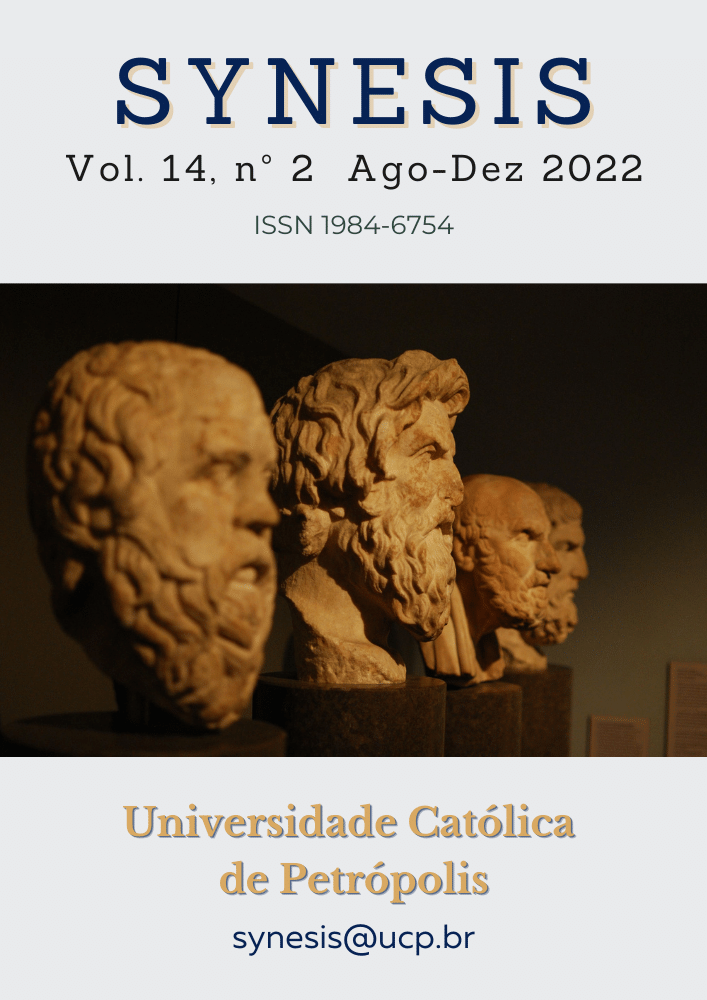Abstract
In Vietnamese history at the end of the 19th century and the beginning of the 20th century, there was a period of great change in all aspects, namely: the decline of the Nguyen dynasty feudalism; The Confucian ideology was the spiritual support for the feudal system in crisis and powerlessness before the tasks of contemporary Vietnamese social history. Vietnamese society fell into a great upheaval, which had never been seen in history, people lost their freedom and democracy seriously. Before the request of history, many thinkers appeared, including Nguyen An Ninh. In his ideological system, Nguyen An Ninh discussed ideas about the role, position, human values and human education. He explained the origin of man from the point of view of evolution. The people mentioned by Nguyen An Ninh are concrete and real people associated with historical and social circumstances, not general and abstract people. Nguyen An Ninh asserts that humans are both active and passive towards the universe. Therefore, human freedom is not born by itself, but it is cultivated according to the evolution of society. In particular, he always believes in the power of real people and that it is people who make social history. Therefore, in order to build the future for the country, it is necessary to train a generation of people who know how to create, know the true value of the race, have knowledge and a soul to revive the national spirit. It is necessary to take care of the development of education, so that everyone is fully educated. Nguyen An Ninh emphasized that human rights are inviolable, he called on everyone to stand up and fight for human rights. His thought on human rights has made a certain contribution to humanity in general and Vietnam in particular.
References
Katz, I. R. (2007). Testing information literacy in digital environments: ETS’s iskills assessment. Information Technology and Libraries, September, 1–10. https://ejournals.bc.edu/index.php/ital/article/view/3271/2884
Killen, C. (2018). Collaboration and Coaching: Powerful Strategies for Developing Digital Capabilities. In Digital Literacy Unpacked (pp. 29–44).
World Bank Group, 2019, The Changing Nature of Work, 2019 World Development Report
(Gilster, P. (1998). Digital literacy. New York: John Wiley & Sons cited from van Laar, E., van Deursen, A. J. A. M., van Dijk, J. A. G. M., & de Haan, J. (2017). The relation between 21st-century skills and digital skills: A systematic literature review. Computers in Human Behavior, 72, 577–588. https://doi.org/10.1016/j.chb.2017.03.010)
Eshet-Alkalai, Y. (2004). Digital literacy: A conceptual framework for survival skills in the digital era. Journal of Educational Multimedia & Hypermedia, 13(1), 93e107
Ameen, K., & Gorman, G. E. (2009). Information and digital literacy: A stumbling block to development? A Pakistan perspective. Library Management, 30(1–2), 99–112. https://doi.org/10.1108/01435120910927565
Van Deursen, A. J. A. M., Helsper, E. J., & Eynon, R. (2016). Development and validation of the internet skills scale (ISS). Information Communication & Society, 19(6), 804e823. http://dx.doi.org/10.1080/1369118X.2015.1078834. Van Deursen, A. J. A. M., & Van Dijk, J. A. G. M. (2010). Measuring internet skills. International Journal of Human- Computer Interaction, 26(10), 891e916. http:// dx.doi.org/10.1080/10447318.2010.496338
UNESCO (2018). A Global framework of reference on digital literacy skills for indicator 4.4.2. UNESCO Institute for Statistics, Information Paper No. 51, Ref: UIS/2018/ICT/IP5
Melhem, S. & Jacobsen, A. H. (2021). A global study on digital capabilities. World Bank Group. https://documents.worldbank.org/en/publication/documents-reports/documentdetail/ 959181623060169420/a-global-study-on-digital-capabilities
Bartlett-Bragg, A. Digital Capabilities: Where people and technology intersect. In Proceedings of the 9th International Conference on Education and New Learning Technologies, EDULEARN17 Proceedings, Barcelona, Spain, 3–5 July 2017; pp. 14–21.
Varga-Atkins, T. Disciplinary digital capabilities of professionals: Networked learning in engineering and management. Res. Learn. Technol. 2020, 28, 2467.
Ng, W. Empowering Scientific Literacy through Digital Literacy and Multiliteracies; Nova Science Publishers: New York, NY, USA, 2012
The World Bank, 2018, September, Digital Jobs for Youth: Young Women in the Digital Economy
UNESCO, 2017, Working Group on Education: digital skills for life and work.
Eshet-Alkalai, Y. (2004). Digital literacy: A conceptual framework for survival skills in the digital era. Journal of Educational Multimedia & Hypermedia, 13(1), 93e107
Ameen, K., & Gorman, G. E. (2009). Information and digital literacy: A stumbling block to development? A Pakistan perspective. Library Management, 30(1–2), 99–112. https://doi.org/10.1108/01435120910927565
Van Deursen, A. J. A. M., Helsper, E. J., & Eynon, R. (2016). Development and validation of the internet skills scale (ISS). Information Communication & Society, 19(6), 804e823. http://dx.doi.org/10.1080/1369118X.2015.1078834. Van Deursen, A. J. A. M., & Van Dijk, J. A. G. M. (2010). Measuring internet skills. International Journal of Human- Computer Interaction, 26(10), 891e916. http:// dx.doi.org/10.1080/10447318.2010.496338
Greene, J.; Yu, S.B.; Copeland, D.Z. Measuring critical components of digital literacy and their relationships with learning. Comput. Educ. 2014, 76, 55–69.
Joint Information Systems Committee (JISC). Frameworks Mapped to the Six Elements. 2015. Available online: https:// digitalcapability.jiscinvolve.org/wp/files/2015/06/3.-Frameworks-mapped-to-6-elements.pdf accessed at 19:00 on January 25, 2022
Eshet-Alkalai, Y. (2004). Digital literacy: A conceptual framework for survival skills in the digital era. Journal of Educational Multimedia & Hypermedia, 13(1), 93e107

This work is licensed under a Creative Commons Attribution-NonCommercial-NoDerivatives 4.0 International License.
Copyright (c) 2022 Synesis (ISSN 1984-6754)
